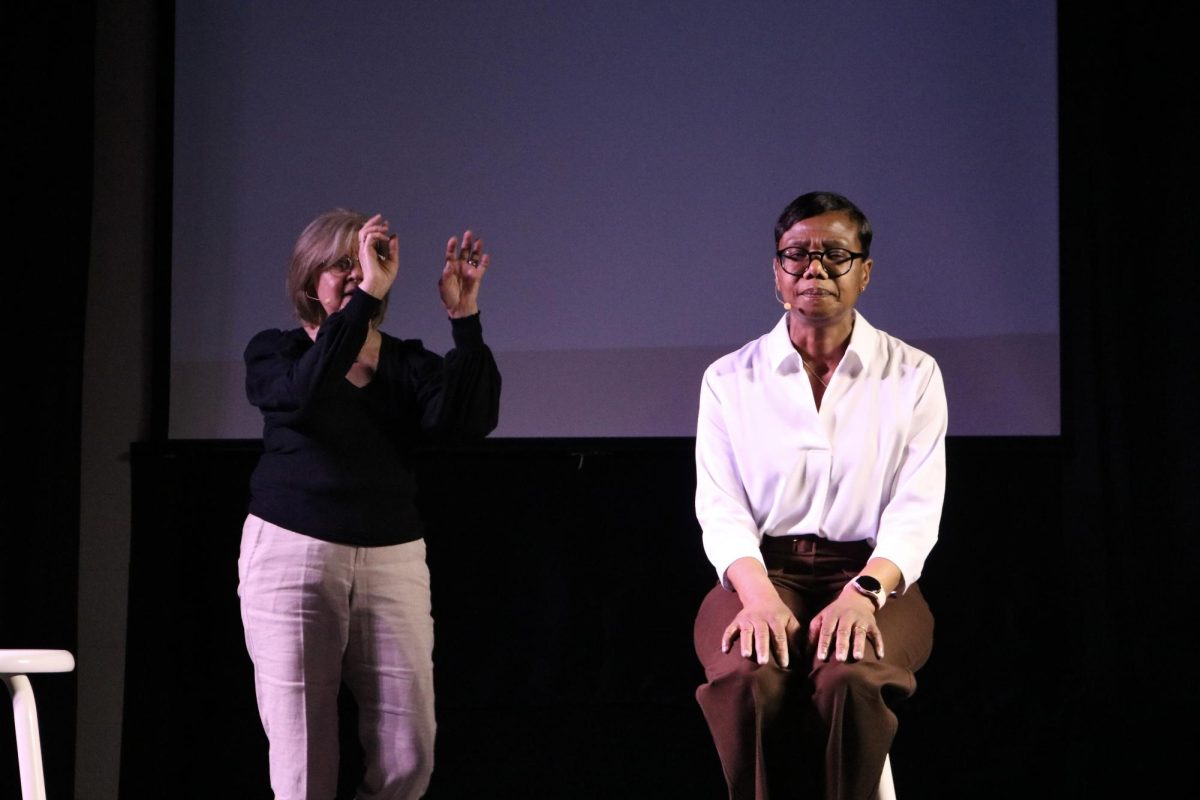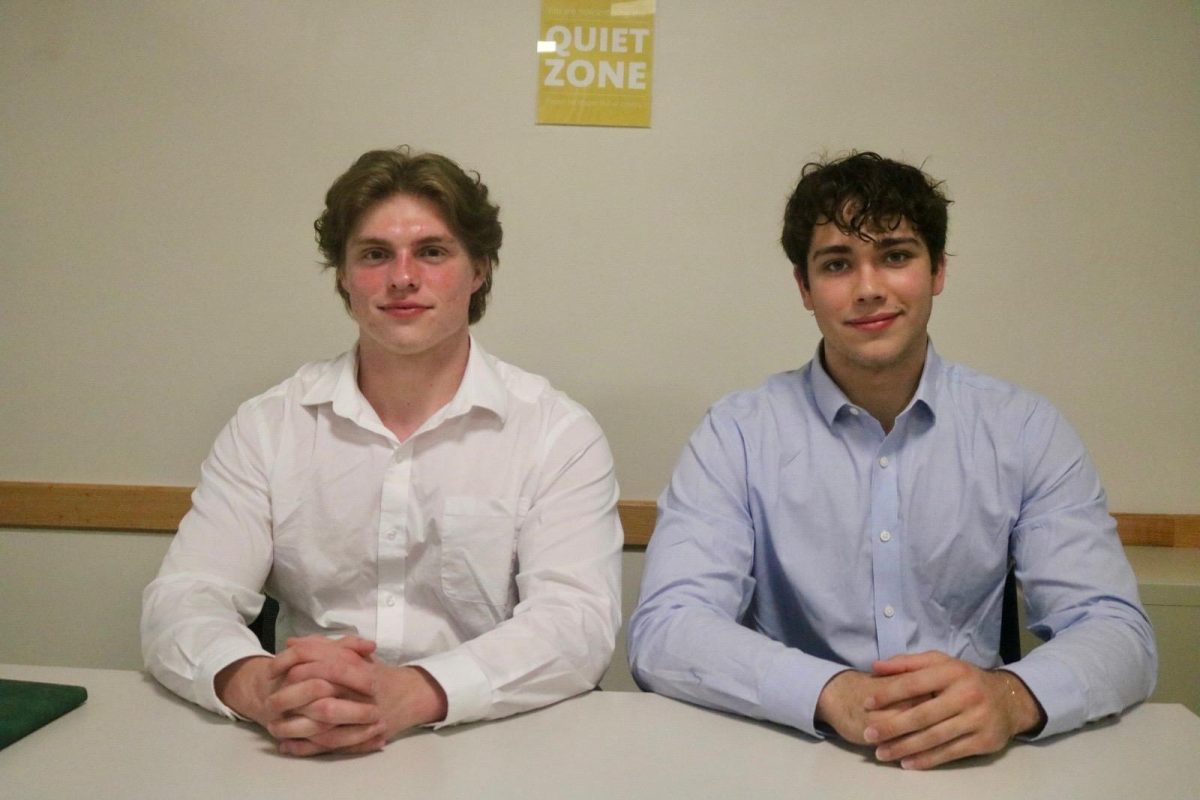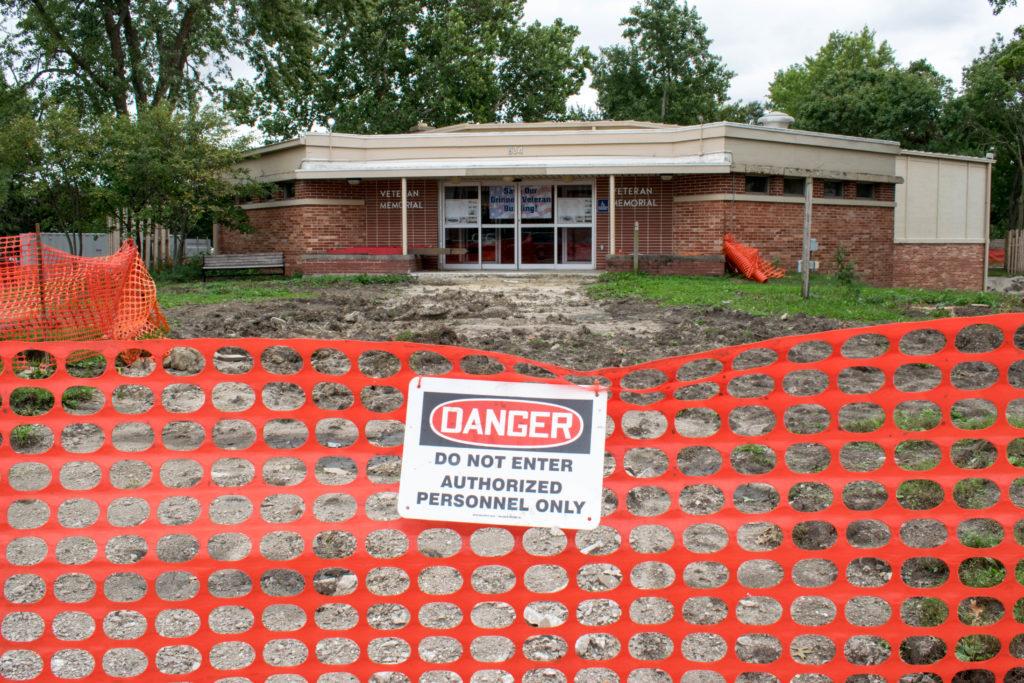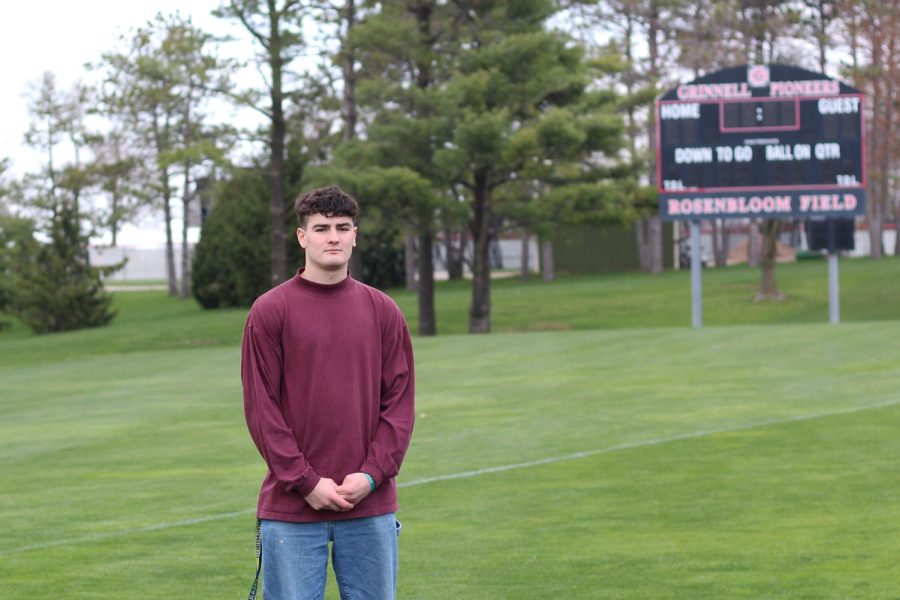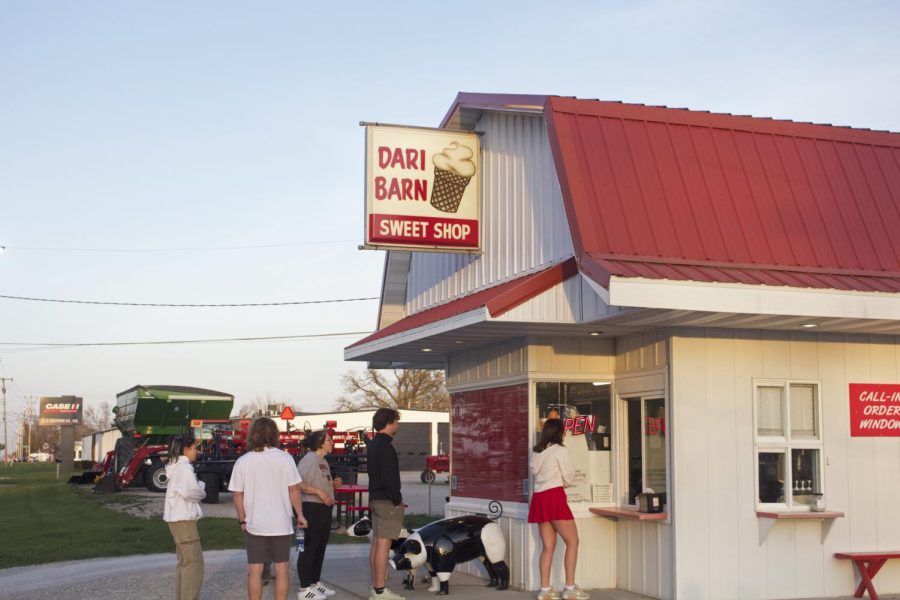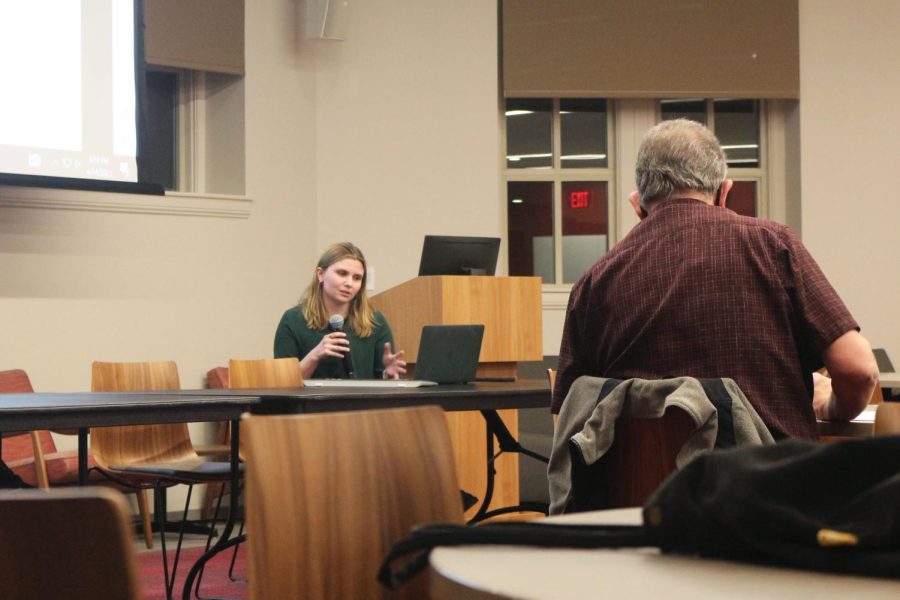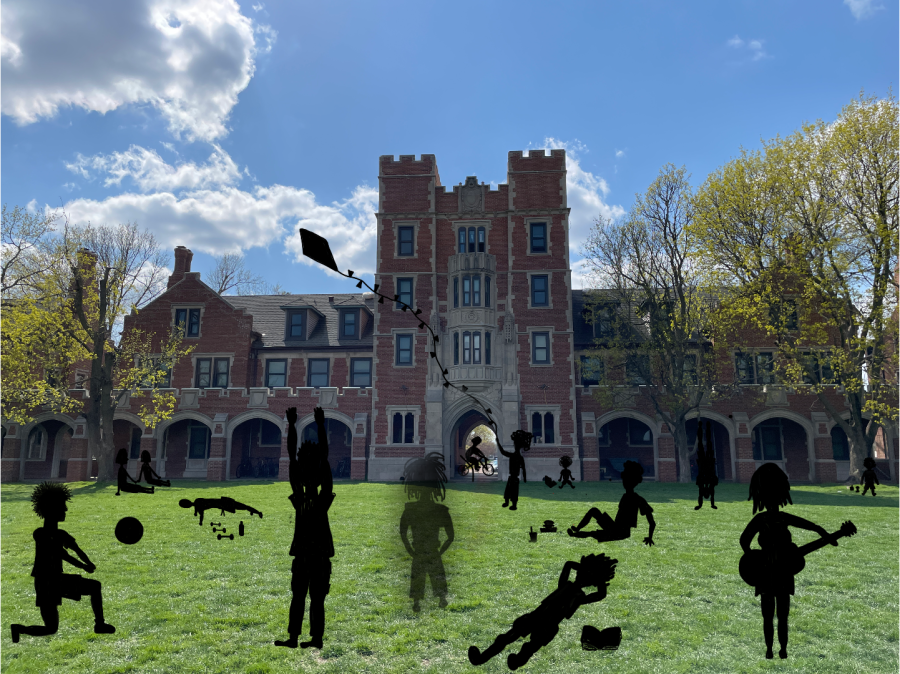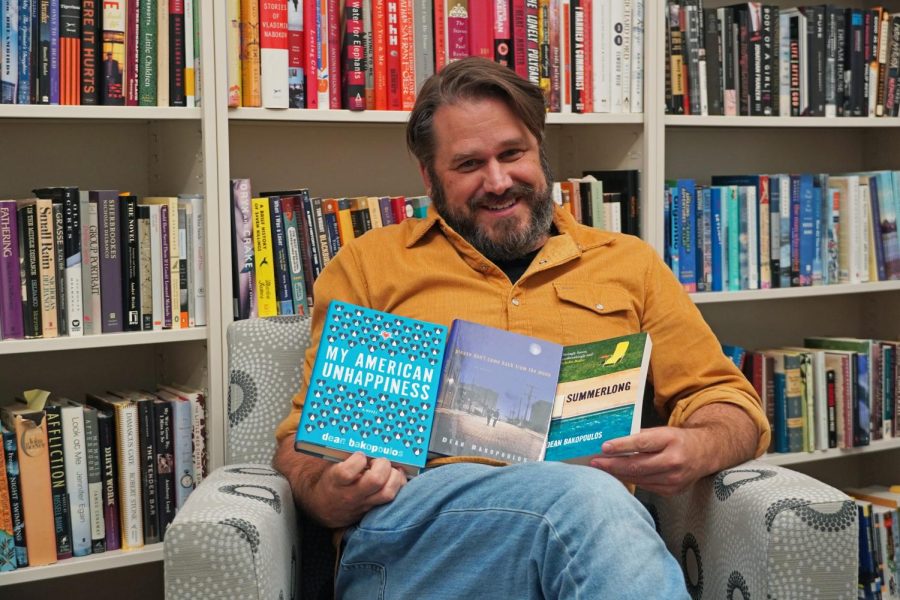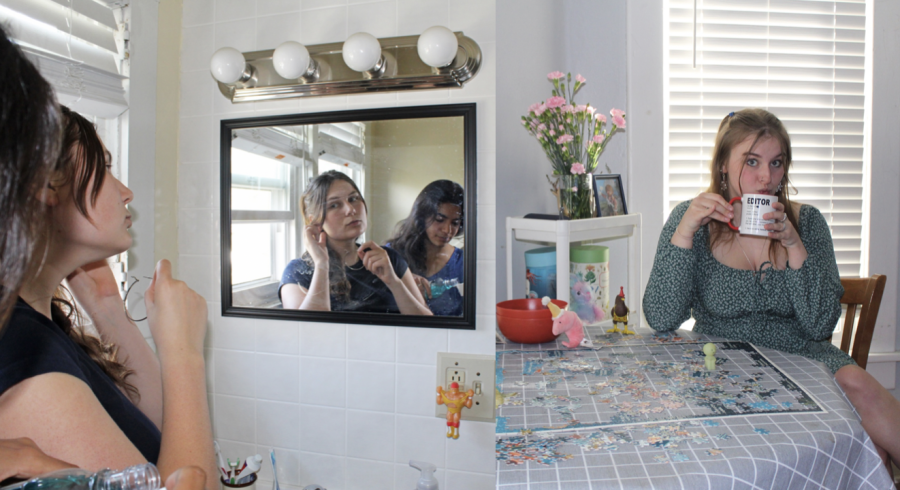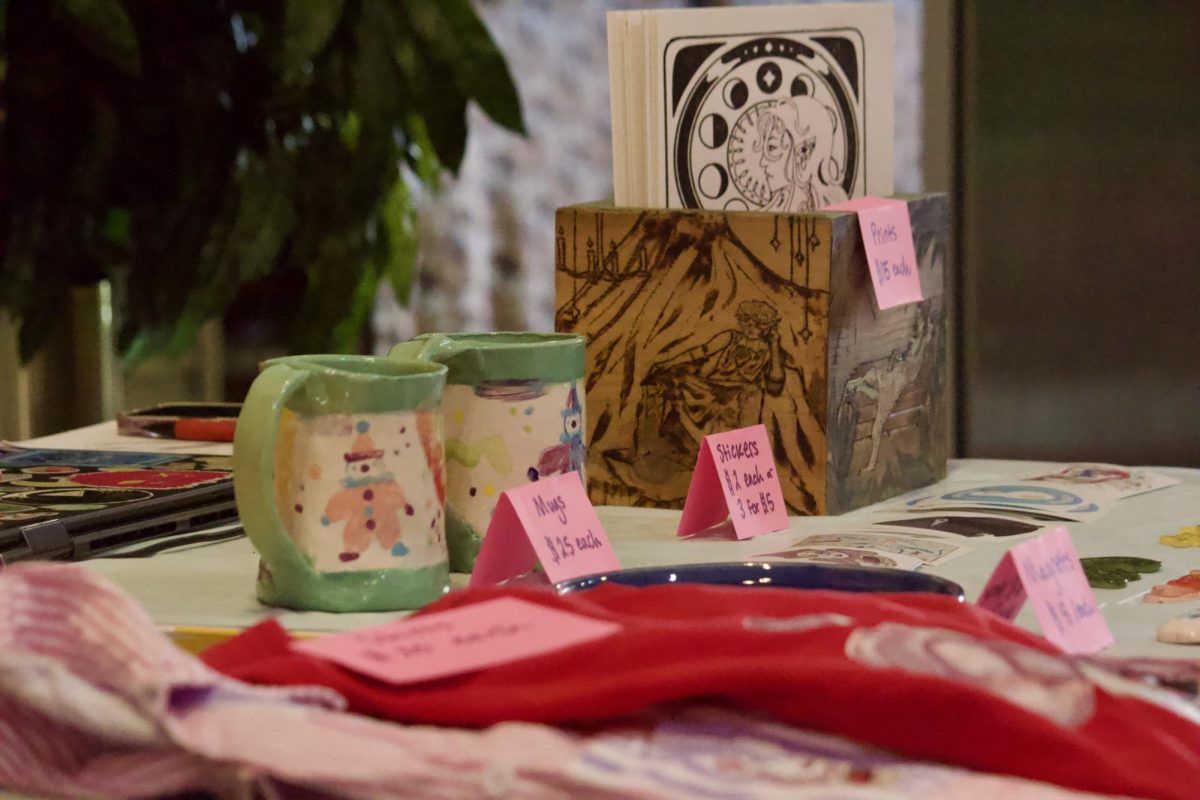By Andrea Baumgartel
baumgart1@grinnell.edu
Nearly 50 years ago, the Grinnell Veterans Memorial Building was new, frequented and a source of pride for local veterans. Now, 834 Broad Street has fallen into disrepair — from heating and plumbing break downs to a bout of asbestos in 2012 — and stands locked and empty. The Central Park project is currently underway, including the area surrounding the building. Emotions are starting to run high as the fate of the building hovers in limbo and time inches towards November, 2017. At that time, voters will decide whether or not to approve a tax levy that would set aside money (approximately $125,000 a year, at around $20 a year for a $50,000 home) for the building.
The issue of deciding when, if and how the building will be repaired and repurposed, however, is complicated.
First, the issue of gender balance on the Veterans Memorial Commission, the group that oversees decisions regarding the memorial, has come to light. According to section 69.16A of the 2017 Iowa Code, all appointed boards, commissions, committees and councils (effective January 1, 2012) must have a gender balance, meaning a roughly equal number of men and women members.
The Veterans Memorial Commission — all of whom must also be veterans — formerly had 5 members: 2 women and 3 men. But both women stepped down from their positions (one due to a new job and schedule; the other due to a move) in 2016. The commission is currently all male, with two empty seats.
Randy Hotchkin, retired US Air Force Master Sergeant and owner of RJ’s Barber Shop on Main, has expressed a desire to fill one of the commission’s empty seats, most recently resulting in a debate with Mayor Gordon Canfield at the city council meeting on Jan. 9. Yet, despite Hotchkin’s repeated efforts, Canfield has repeatedly refused his requests to be appointed, citing the gender balance clause of the Iowa Code.
In a letter posted on the Grinnell Veteran’s Memorial Building Facebook page, Hotchkin states that he believes that the delay on the part of the city to reinstate the commission is a way to “cripple the Vets Commission and sabotage any attempts to save the Veterans Memorial Building.” The letter itself has been liked and shared multiple times by members of the group, with some comments going so far as to claim that the city is anti-veteran. Hotchkin said he does not believe that the city council is anti-vet, but has expressed concern that veterans are not being prioritized.
In another portion of the letter, Hotchkin cites the mayor’s reappointment of two male members to the Human Rights Commission in December of 2016 — which technically violates the gender balance rule. “I guess gender wasn’t a concern then?” wrote Hotchkin.
“It isn’t our practice to kick somebody off because their term is up,” said Canfield. “[The Human Rights Commission] had been formed before the Iowa Code gender rule was established.”
While the same exception is not being made for the Veteran’s Memorial Commission, Canfield maintains it is not an issue with Hotchkin or the Commission, rather there are larger concerns about the usage of the building going forward.
“I have no faults with Randy. There are other people who have requested to be on the committee. We have purposely held off because the building has been such a controversial issue. Sometimes a little time can calm people down. We will be making appointments by February, I hope. There are two women who are eminently qualified, [whom] I have spoken to at length.”
Hotchkin stressed that he supports whatever the outcome of the tax levy determining the building’s funding for repairs, and that he will continue to try to play a role in honoring veterans.
“I get that there’s probably people out there that are hesitant to give [money] because they believe the city isn’t committed to the building. I told the mayor that we need a strong commission to plan an [alternative] memorial if the vote is shut down.”
Financial concerns are perhaps the biggest obstacle of all to the renovations. Canfield estimates that total costs would amount to $2 million dollars. Even with the tax levy, more funds would be needed. In an interview with The S&B in Sept. 2016, the Veteran’s Commission estimated repairs would amount to $1-$1.5 million.
Canfield feels a strong commitment to both the veterans and the commission, which make up a vibrant part of the community.
“I will not stand for, and I will not go to my grave if we don’t properly honor the veterans. … We cannot half-ass this,” Canfield said.
“The people who say it is a controversy are the ones who are highly critical. They have no creative thoughts on … how [the building] should sustain itself,” Canfield said. “They just want it built. And to just build a building, that would get voted down. People don’t want to pay taxes for no reason.”
Still, the Mayor remains hopeful, saying that once the commission is re-formed, “We’ll be evaluating all the different options.”
One of these options—arriving at near-perfect timing—may bridge both sides together. Endorsed by the community on the Veterans Memorial Facebook Page and spoken highly of by the mayor is a proposal by Tom Lacina — not a commission member, nor a veteran, but a lawyer.
In addition to being a lawyer, Lacina is the director of the Grinnell Area Arts Council as well as a farmer. This past summer, the Grin City Collective artist residency, which was located on his farm, closed down.
“There was a little bit of a gap,” Lacina said. “We had a lot of college students and creatives in the town alike that would like to come out there.”
Lacina came up with a plan to turn the Veterans Memorial Building into an artist’s residency, filling the void left by Grin City’s closing. His proposal was recently presented to the city council, and was well-received from both sides.
Lacina’s proposal acts as a catalyst, renewing the community’s ongoing commitment to the Memorial’s renovation.
“I’m not desperately looking to save the building,” he said. “I’m just excited about what could be a great location, and great use for, the building.”
Lacina’s proposal would turn the decrepit building into another space for creativity to flourish in Grinnell and establish the community as one dedicated to the transformative processes of art.
“I think an artist’s residency could be a dynamic addition to our downtown. We’d have close to two to three dozen national visiting artists per year involved in activities in the downtown area,” Lacina said. “They’d have displays, show or read their work if they’re writers, and basically touch the lives of Grinnellians — veterans and others who will learn a lot from hearing from artists.”
While the collective and art exposure would not be exclusively for veterans, there would be preference given to veteran applicants, along with a possible stipend.
“I’ve been meeting with veterans, meeting with artists and meeting with the council. I’ve been meeting with everyone. To me, there are no sides. I’m just like — if this is a good thing for the community, let’s see if we can do it,” Lacina said.
Although his proposal is the most detailed yet, Lacina admits that there are many pieces that go into turning the idea into reality.
“The mayor is quite correct in saying that there is work that needs to be done.”
Even if the levy is passed, more funds will be needed to repurpose the building into a true artist’s residency.
“The levy, grant-writing, donations and support from the city are the big ones,” Lacina said. “The more sustainable the program, the more likely there will be support from everybody. I’m trying to create dialogue by pulling together people who aren’t necessarily accustomed to being a part of the same project — veterans and artist folk. Not that there’s not an intersect — there definitely is — but …I think that joined together, it’ll be quite a formidable and active group.”





